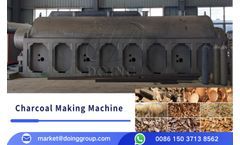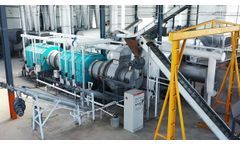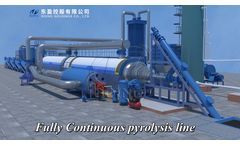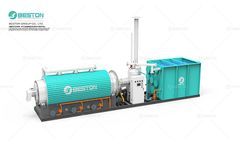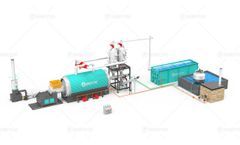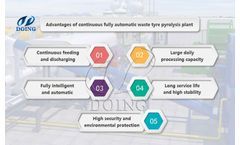Pyrolysis System Articles & Analysis
54 articles found
For large-scale operations, modular catalytic units can be retrofitted into existing pyrolysis systems to upgrade their performance without requiring complete infrastructure replacement. ...
Technological Advancements in Pyrolysis Systems Modern biomass pyrolysis systems are designed with automation, energy integration, and emissions control at their core. ...
The industry is increasingly shifting toward continuous pyrolysis systems, which offer uninterrupted feedstock input and product discharge. ...
Central to this evolution is the refinement of continuous pyrolysis plant design, which now integrates cutting-edge reactor engineering to enhance thermal performance, throughput, and system longevity. Evolution of Reactor Architecture Traditional batch-type pyrolysis systems operate with high thermal inefficiencies due to ...
This blog will provide an overview of pyrolysis reactors for sale and explore the essential components that make up these systems. ...
This heat causes the shells to decompose, releasing volatile gases and producing solid biochar.The by-products of the pyrolysis process, including gas and liquid oil, are captured and can be used to generate energy for the system or sold for other purposes. ...
This reduces the need for fossil fuels and helps in the circular economy model by reintroducing waste into the production cycle. Pyrolysis gas, which consists of volatile hydrocarbons, can be used to power the pyrolysis process itself, thereby making the system more energy-efficient and reducing external energy needs. ...
A balanced approach is essential. Pyrolysis Time: The duration of the pyrolysis process also influences charcoal quality. ...
A key question that often arises is whether pyrolysis is a continuous process. The answer depends on the type of pyrolysis system used. ...
Avoid generating too much waste gas. 2. Pyrolysis and carbonization: the material is reheated to the pyrolysis temperature in the carbonization furnace. ...
Feeding the Biomass into the Reactor Once prepared, the biomass is fed into the pyrolysis reactor. In biochar production equipment, this is usually achieved via a conveyor system or manually, depending on the size and scale of the operation. ...
The thermal efficiency of a pyrolysis reactor is a critical factor in determining the overall performance, energy consumption, and economic feasibility of the pyrolysis process. ...
Phases of the Operating Cycle in a Continuous Pyrolysis PlantThe operating cycle of a continuous pyrolysis plant typically includes the following phases:Feedstock Loading and Pre-treatment: In a continuous pyrolysis system, raw materials such as waste tires, plastics, or biomass are fed into the reactor through a continuous ...
This fraction is significant in determining the efficiency and output of a pyrolysis system. Key Aspects of the Biomass Fraction in Pyrolysis 1. Composition: Biomass is primarily composed of cellulose, hemicellulose, and lignin, along with various extractives and inorganic materials. The relative proportions of these components influence the ...
**Scalability** - **Easier to Scale Up**: Continuous pyrolysis systems are often easier to scale up compared to batch systems. ...
How Does Small-Scale Pyrolysis Equipment Work? Small-scale pyrolysis machines operate on the same fundamental principles as larger pyrolysis plants. These machines can process materials like sawdust, sludge, and coconut shells to produce valuable pyrolysis oil, syngas and more. A small-scale pyrolysis ...
The mini pyrolysis plant represents a significant opportunity for investors looking to enter the waste-to-energy sector. ...
Contaminants are removed to improve the efficiency of the pyrolysis process. Heating: The prepared plastic waste is subjected to high temperatures, usually between 300°C and 900°C, in a pyrolysis reactor. ...
Carbonization: the material is reheated to the pyrolysis temperature in the carbonization furnace. In this process, the biomass decomposes to produce combustible gas, bio-oil and solid carbon, which are effectively treated through a specific system to achieve environmentally friendly recycling. ...
Unlike batch pyrolysis, which processes materials in discrete batches, continuous pyrolysis systems operate continuously, enabling uninterrupted feedstock processing and higher throughput. ...









